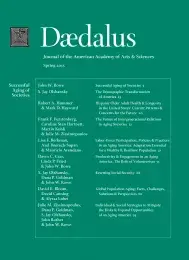Individual & Social Strategies to Mitigate the Risks & Expand Opportunities of an Aging America
Increasing life expectancy offers the potential benefit of additional years of productivity and engagement to both individuals and society as a whole. However, it also carries substantial risks. For many, advanced age brings increased disease and disability (including cognitive impairment), financial insecurity, and social isolation. These risks are greatest for those with the least education and financial resources. An aging society must cope with increasing demands for high-quality geriatric care, mounting stresses on social insurance programs (such as Social Security and Medicare in the United States), and the increasing danger that the growing gap between the haves and have-nots will threaten societal cohesion. These risks can be mitigated or aggravated by the lifestyle and savings behavior of individuals, families, employers, and the government. We present policy options in the areas of education, work and retirement, financial security, health care, and social cohesion that can promote the benefits and reduce the risks of longer life.
The aging of America presents both opportunities and risks. The opportunities, which are often neglected,1 relate principally to the availability of large numbers of generally fit, experienced older persons who can make valuable economic and social contributions to society.2 Although increasing attention is being paid to the risks of an aging society and ways to protect against them, the United States has yet to actively adapt to either the risks or the opportunities. The focus of this essay is to illuminate the changing nature of both.
For individuals, the risks of a longer life include becoming ill or disabled and needing extensive acute and long-term care. The latter is particularly important, as long-term care can deplete the patient’s financial resources, leaving him or her dependent on public support. Other individual risks include isolation and disengagement: increasing numbers of older persons are living alone, with fraying connections to families. U.S. families themselves are undergoing major changes in structure and function that impede their capacity to serve as a safety net for elderly members. . . .
Access the full volume here.
